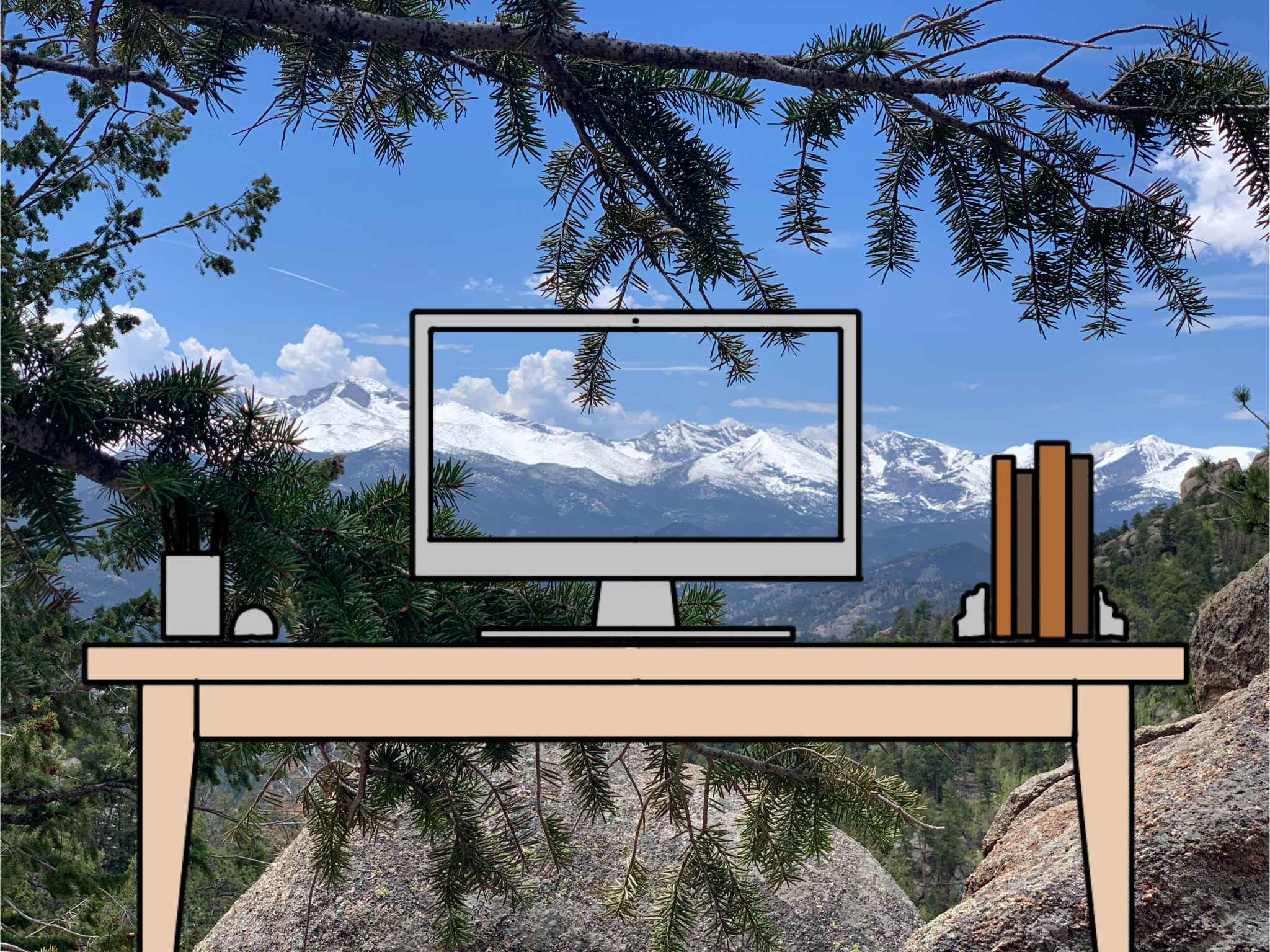Ouch. This post, more than others, paints me as a rather entitled and spoiled person. I’ll work on that, but for now let’s just assume the best- that the lessons I learned can help others live better lives. That is what lighting design – and this blog – is all about.
A few years ago our family had an extraordinary opportunity to take an extended trip across the United States. At that time we were homeschooling our children and I had a brief period after leaving one job before I needed to concentrate on the next, and my brilliant partner suggested that we take a “big trip.”
I promise this has something to do with lighting home offices, but I might reminisce a bit first.
We borrowed a good friend’s pop-up camper trailer, packed our van full of way too many things, and embarked on a seven week camping trip across New England in autumn. We camped at state parks, National Parks, county parks, and our first KOA. We were hooked and spent the long drive home dreaming of how we could take this once-in-a-lifetime opportunity again next year.
For a few years we repeated long trips each September until our children went to schools with real calendars and my job heated up. We bought a tiny fiberglass camper, packed our van full of way too many things again, and took trips to the American southwest, near west, northwest, and California.
And, for a few weeks each year, my office looked something like the photo above. I worked on a deck overlooking the black hills of South Dakota. I sat at a coffee shop in Moab gazing out at the rocky arches beyond. I grabbed wifi at the visitor’s center in the shadow of Glacier National Park. I worked at a picnic table in Colorado, another in Arizona, and many more. Looking back I realize that I was extraordinarily privileged. You could even say spoiled.

Every year I returned to a home office that served as the headquarters of a growing business that continues to operate remotely as we hire and expand across the continent. I had plenty of photographs to use as computer desktop images (that’s Long’s Peak in Rocky Mountain National Park, Colorado, above), but my view was cut down to a few inches of computer screen. And that all leads me directly to the trip I took this morning to a different destination: writing a 1THING: New Build post on lighting in home offices.
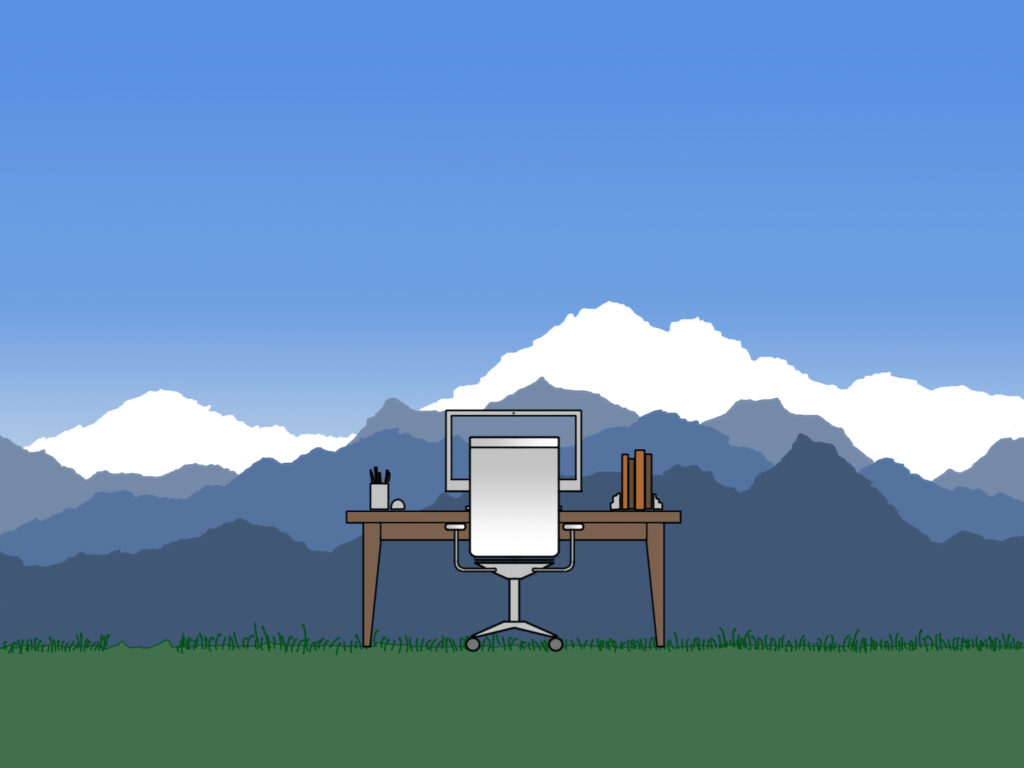
In each post of this series I attempt to narrow down the essence of good lighting into a single solution for hard-wired lighting in a different space. The exercise may be helpful to readers, but it is also incredibly beneficial for me to have time to really think and explore lighting in theory and practice. If the world is going to get better lighting, I have to think beyond super-high-tech offices and big-budget spaces. How can I help others work in a home office that feels like the image above? It all boils down to 1THING: light up your sky…your whole sky.
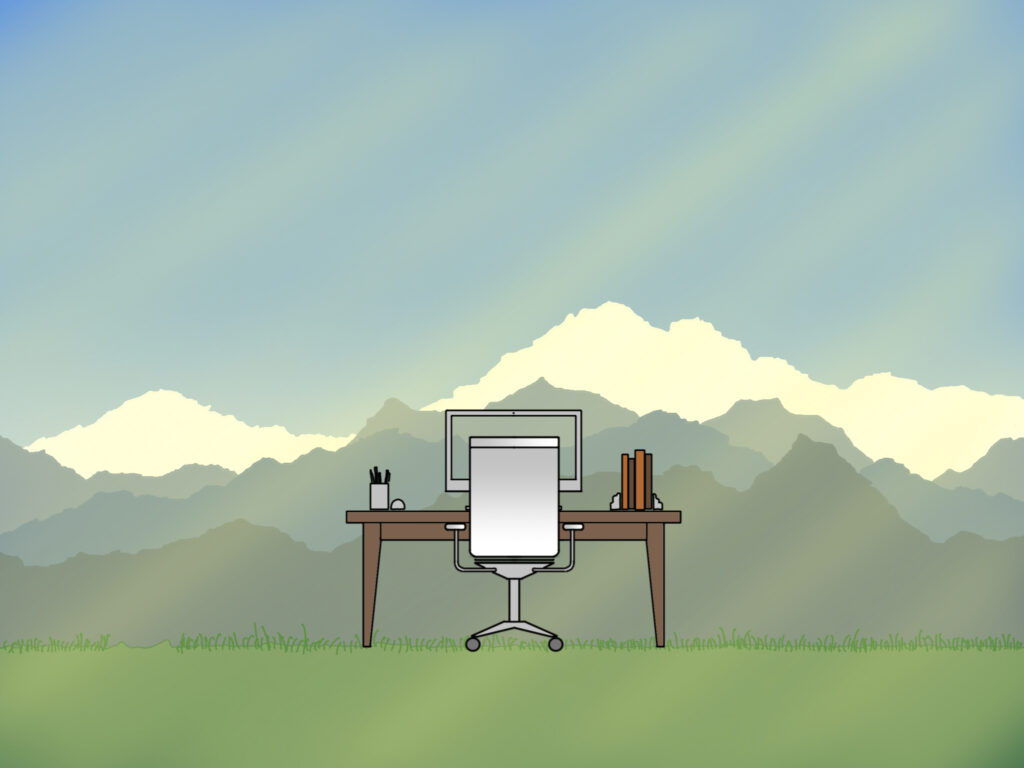
Here’s one thing I learned to avoid in office lighting: strong direct light from overhead, like the sun or recessed downlights. Sitting in the sun in southern Utah, no matter how beautiful the sky and mountains, simply is not a comfortable working environment. Glare is something I don’t need when I am working, looking at a computer screen, writing notes on paper, or any other office task. But neither do I want the opposite of a sunny day- a cloudy day may be glare-free but leaves my mood and energy level low. What my eyes, body, and soul crave is a sunny day…with some shade.
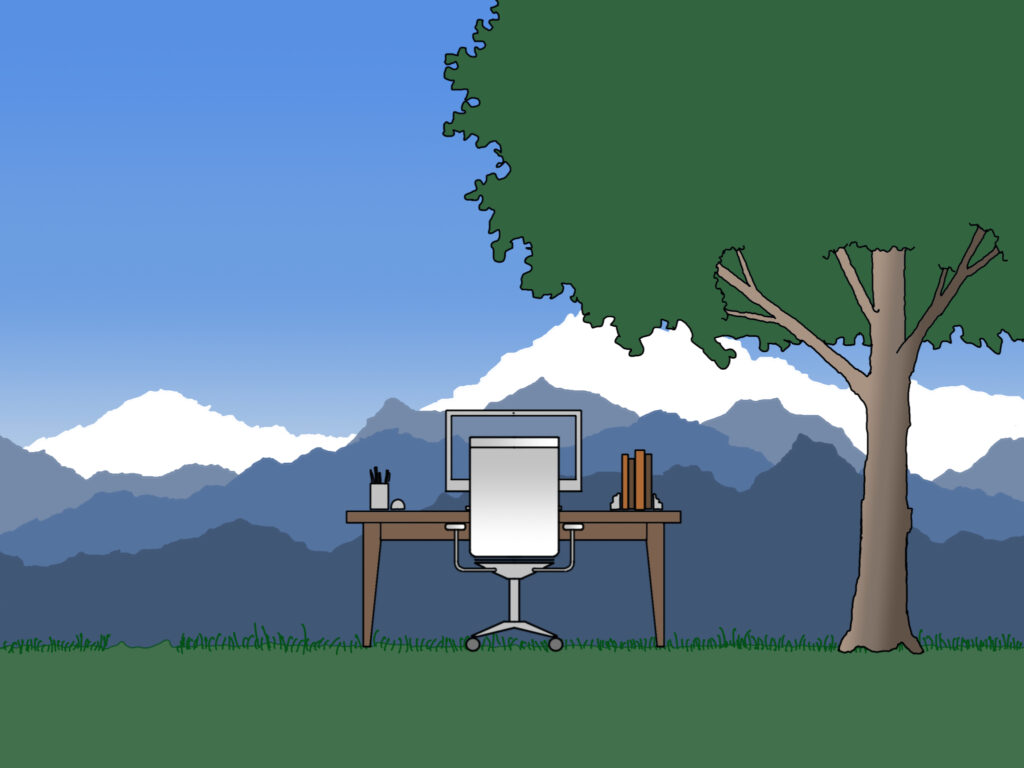
A good tree makes all the difference when working outside, and I sat underneath a few great trees on our big trips. I had uninterrupted views of spacious skies and purple mountains but was kept safe from the eyestrain-inducing skin-burning rays of the sun. In my mind, this is the best place to work. Ever.
Now let’s go home, where I work and where more and more others spend at least part of their work week.
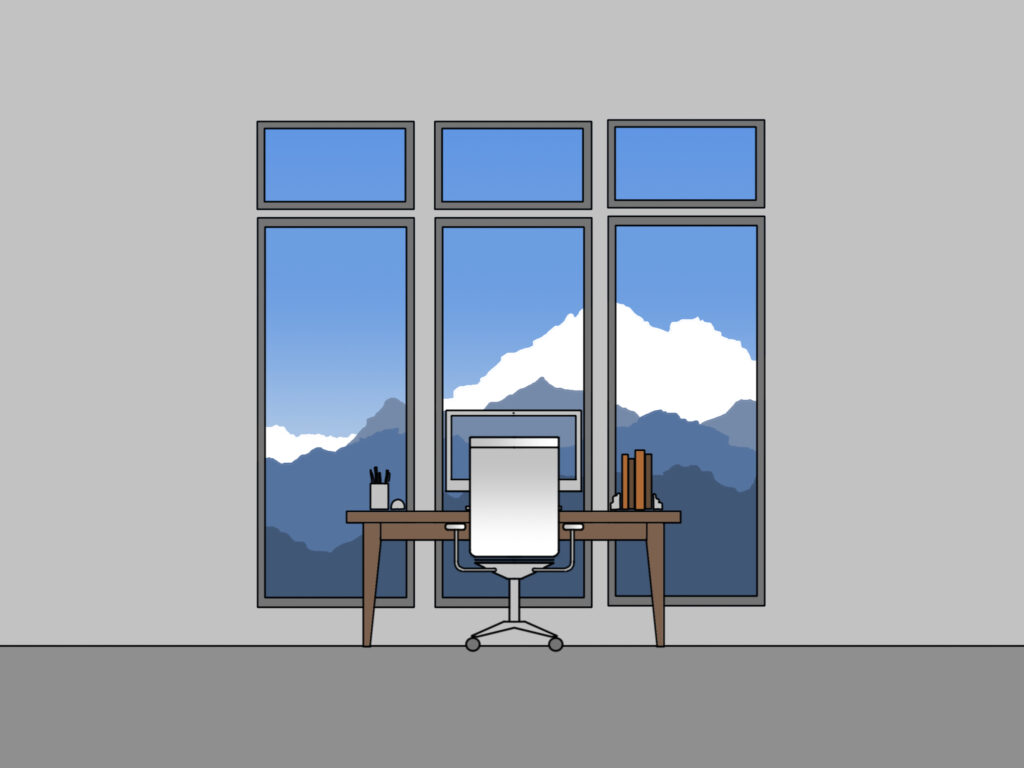
If I built my own office, it might look something like this. I dream of a home office with floor-to-ceiling windows on three sides and a great view. For the last three years, however, my office was crammed into a basement (a temporary solution that lasted too long) with zero windows. I was slowly going mad, so I moved upstairs and gained at least a few windows.
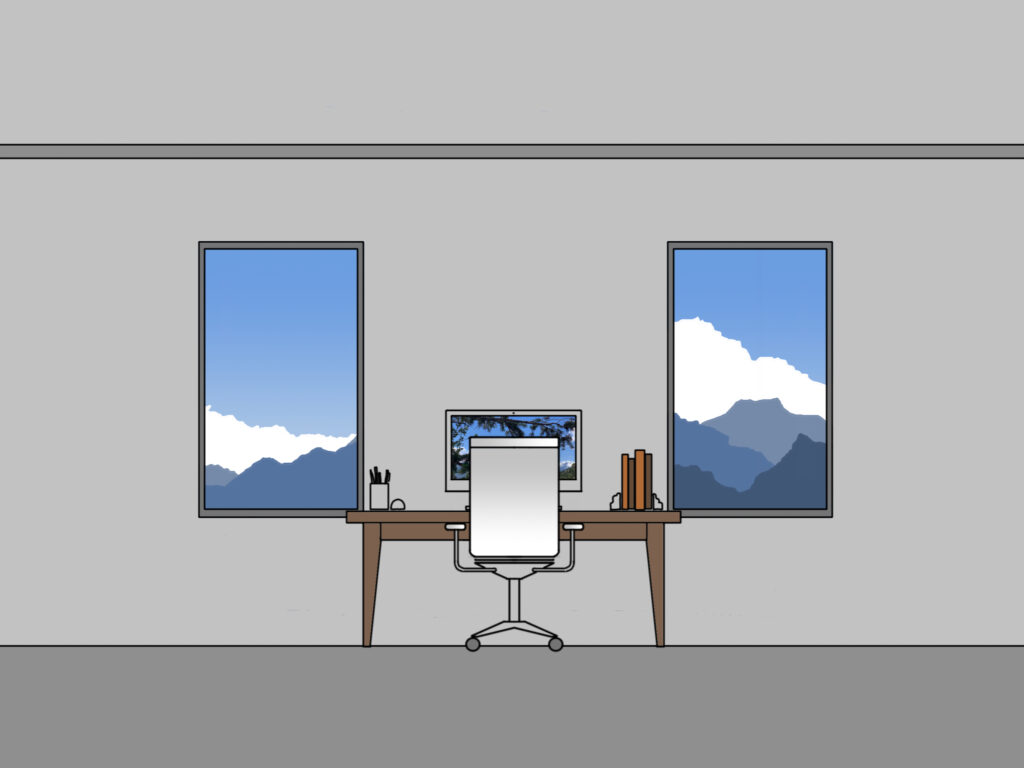
My view is not spectacular – I see the street and neighboring houses and the nearest mountains are a twelve hour driver – but at least I have some natural light. As you can see from the sketch above, a couple of windows does not replace what I lost when I moved indoors. So the first thing I did in my new office was add more lighting.
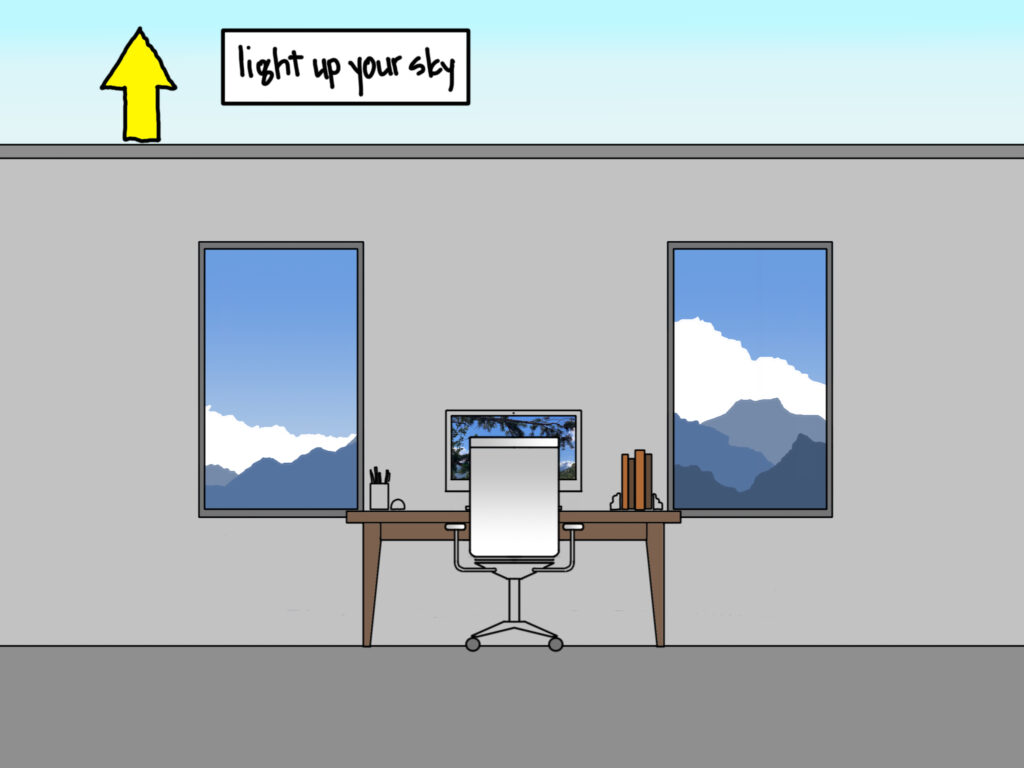
Here is the one thing I recommend wiring up in your new (or newly remodeled) home office: indirect lighting to fill out your sky. This is similar to my recommendation for bedrooms but with one key difference gleaned from my days of working outdoors: I extended the sky to the horizon.
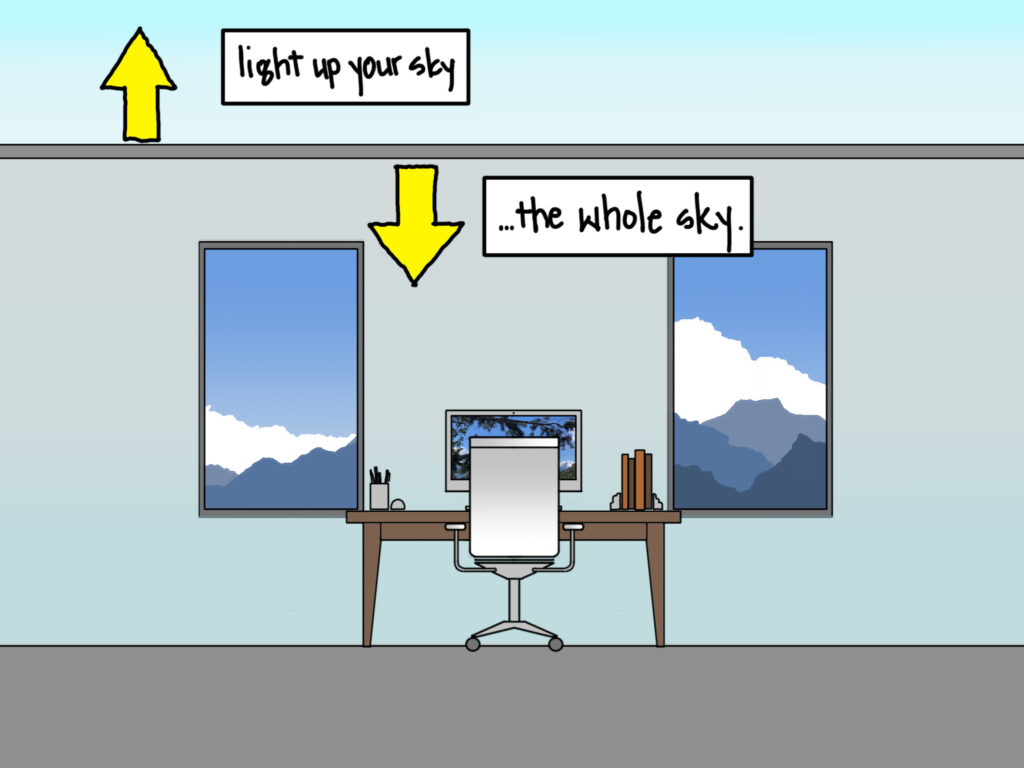
The sky, when working outdoors, is not a small square above my head but rather a vast expanse that covers 360° of my view. The sky is right in front of me, to my left, and to my right. So in my “new” home office, I pushed light towards the ceiling for glare-free indirect light, but I also bounced light off the walls to fill out my sky. Because I view this office as (another) temporary space, I built a simple piece of furniture to support the lighting. If you are building a new office, I recommend building uplighting and downlighting into a trim around the room.
Here’s a photo of what this looks like in my office now:
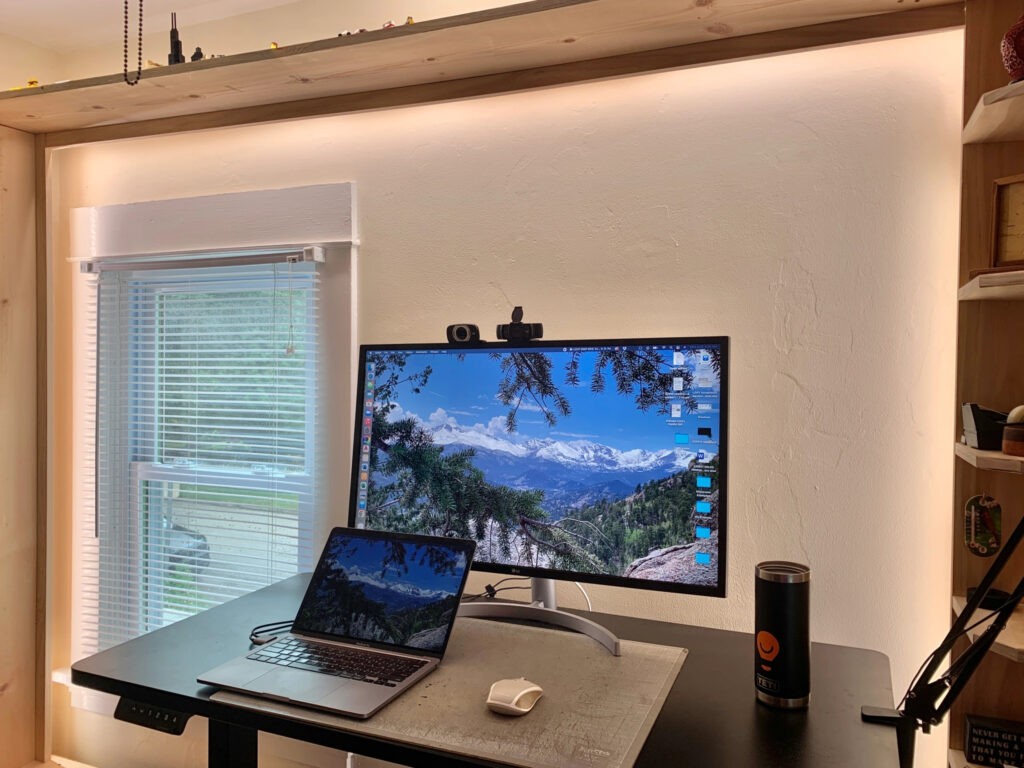
Note how the walls bounce light into the room, softly illuminating the desk without any glare or direct sources. No downlights. No desk lamps. No overhead fixtures. Just a sky. And while it isn’t perfect, it gets me one step, 1THING closer.
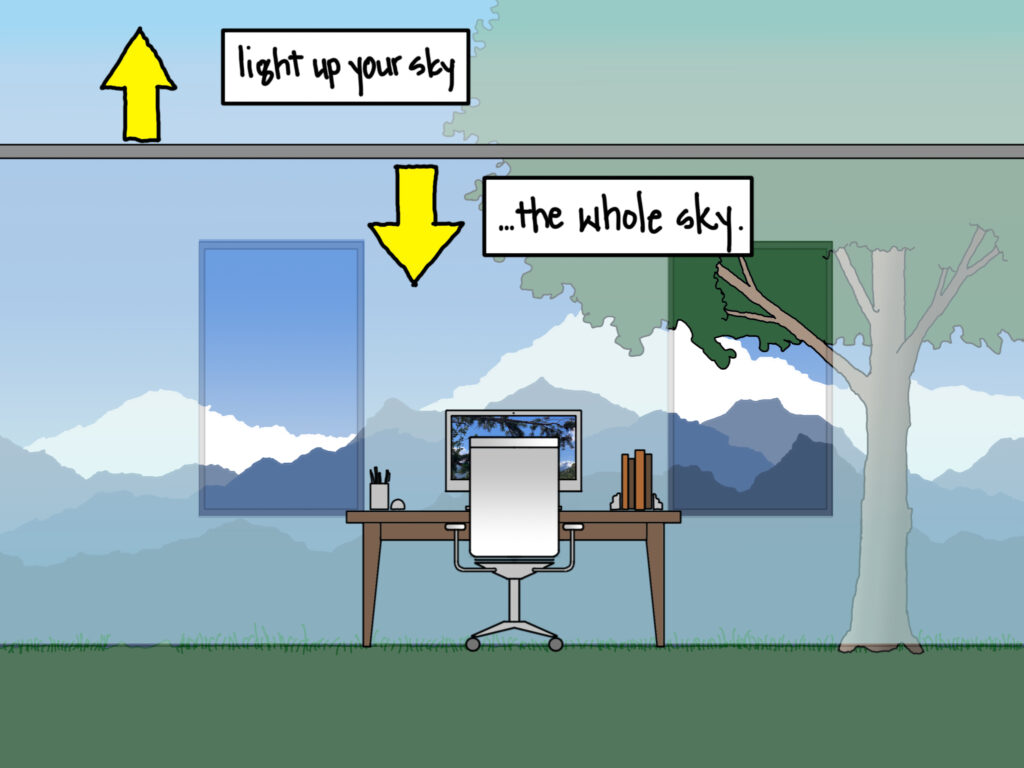
Someday I hope to work from a picnic table in the shade with uninterrupted mountain views. Until then, I’m happier and healthier in my better illuminated home office.
And one more thing…
If you are adding light for your ceiling and walls like I suggest above, consider making that lighting color-tunable. I utilized RGBTW linear lighting from ProLuxe that gives me warm white, cool white, red, green, and blue LED chips continuously along my ceiling and walls. This allows me to “match” daylight and skylight colors during the day and shift warmer towards sunset, increasing the chances of my body regulating itself to a normal 24-hour cycle. Our lighting should be as close to natural light as practical, and that means moving away from static white and embracing the full spectrum of color nature provides.
